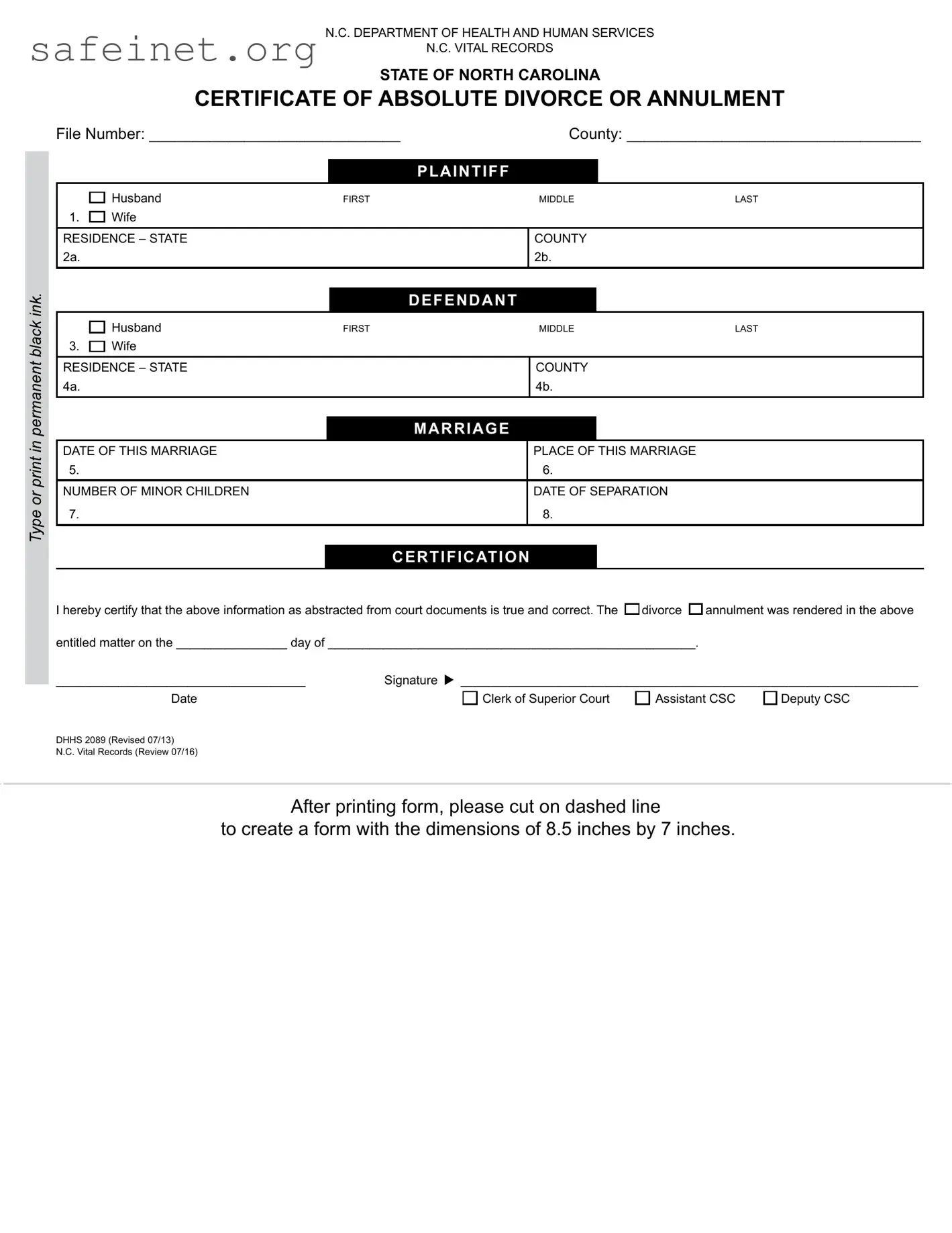What is the purpose of the DHHS form?
The DHHS form, specifically the North Carolina Certificate of Absolute Divorce or Annulment, is used to officially document and certify the conclusion of a marriage through divorce or annulment. This certificate is important for various legal purposes, including updating marital status for government records and personal affairs.
Who needs to fill out the DHHS form?
Either party involved in the divorce or annulment process needs to complete this form. The plaintiff and defendant, often referred to as the husband and wife, should ensure all relevant details are accurately provided for processing.
What information is required on the DHHS form?
The form requires the names of both parties, their residence states and counties, the marriage date and place, the number of minor children, and the date of separation. Ensure all fields are filled out completely to avoid delays.
How is the information on the DHHS form certified?
Certification is done by signing the form to confirm that the information provided is accurate and true. Typically, this section is signed by the Clerk of Superior Court or an authorized assistant, which officially validates the document.
What should I do after filling out the DHHS form?
Once the form is completed, follow any additional instructions provided for submission. Generally, you may need to print the form, sign it, and then submit it to the appropriate court office or government agency handling vital records.
Is there a fee associated with filing the DHHS form?
There may be fees involved when submitting the DHHS form, which can vary based on the county or jurisdiction. It's advisable to check with your local court or vital records office for specific information regarding any costs.
Where can I obtain the DHHS form?
The DHHS form is typically available online through the North Carolina Department of Health and Human Services website or directly from county court offices. Ensure you are using the most recent version of the form.
What if I make an error on the DHHS form?
If you realize you've made an error after submitting the form, contact the relevant court or agency immediately. There may be procedures in place to amend the information to ensure it accurately reflects your circumstances.


 divorce
divorce  annulment was rendered in the above
annulment was rendered in the above